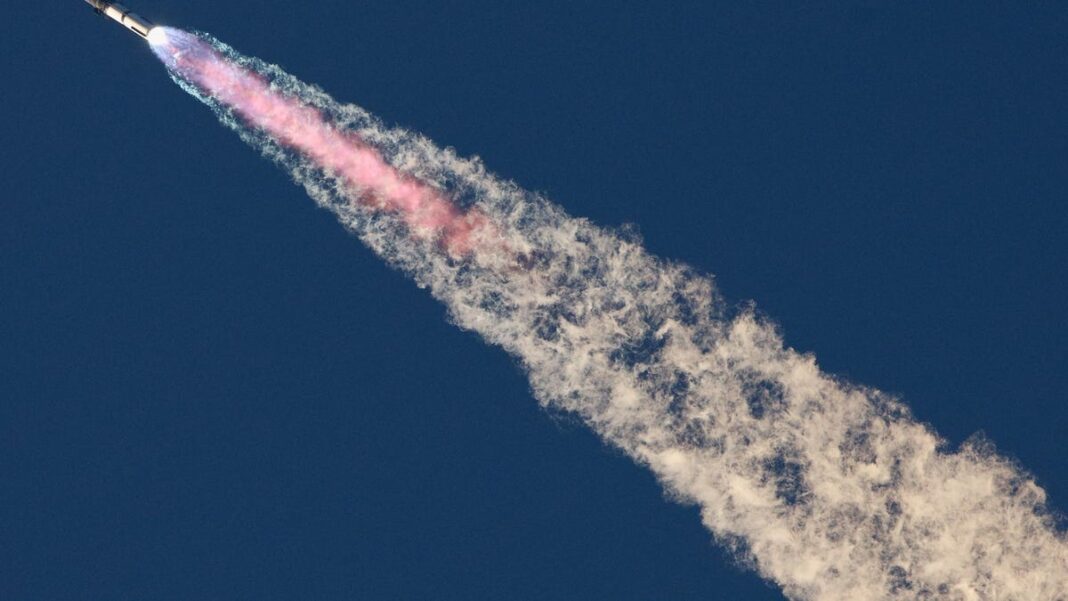SpaceX conducts fifth Starship launch; successfully captures booster with giant robot arm
“Thanks to the relentless efforts of our engineers, we achieved a successful catch on our first attempt,” the company announced.
SpaceX has successfully executed its fifth test launch of the Starship and Super Heavy Rocket on Sunday at the SpaceX Starbase in Boca Chica, located near Brownsville, Texas.
“The fifth flight test of Starship lifted off on October 13, 2024, with our most challenging test objectives to demonstrate essential techniques for making Starship and Super Heavy fully reusable,” stated SpaceX.
This launch was given last-minute approval from the Federal Aviation Administration, which initially scheduled the event for November.
The combined rocket and spacecraft are known as “Starship,” standing at nearly 400 feet tall. This reusable transportation system is designed for carrying cargo and crew to Earth’s orbit, the Moon, and even Mars.
What was tested?
During this launch, SpaceX aimed to see if it could successfully catch the rocket’s booster as it returned to Earth.
Called Mechazilla, the massive robotic arm attached to a tower is crucial for the reusable design. It was successfully used to catch the rocket boosters on the first attempt this Sunday.
“Thousands of specific vehicle and pad requirements had to be fulfilled before the catch could be attempted, and we succeeded on our first try thanks to the dedicated efforts of SpaceX’s engineers,” the company noted on its website.
This achievement follows three previous test launches that ended in explosions, with a successful landing occurring in the Indian Ocean in June.
Key facts about Starship
SpaceX has dedicated years to creating and testing the Starship, which is set to play a key role when U.S. astronauts aim to return to the Moon as early as 2026.
As part of NASA’s ambitious Artemis program—the first lunar initiative since the Apollo missions of the 1970s—SpaceX received a significant $2.9 billion contract to develop a spacecraft capable of safely transporting astronauts from orbit to the lunar surface.
Nasa’s Artemis program plans to establish a lunar base at the Moon’s south pole, where water ice is believed to be abundant and could potentially be harvested for drinking, breathing, and as a source of hydrogen and oxygen for rocket fuel, facilitating human missions to Mars as soon as 2028, a goal that Elon Musk is pursuing.
The first crewed test flight of Starship is set for the third and final mission of the Polaris Program, backed by SpaceX and billionaire businessman Jared Isaacman. Last month, the Polaris Dawn mission marked the first-ever commercial spacewalk from a crewed Dragon capsule.
The 165-foot Starship spacecraft, which has only undergone uncrewed test flights, successfully landed in the Indian Ocean during its latest demonstration in June, while the 232-foot rocket booster landed off the Gulf of Mexico.
Despite prior launches ending in explosions, SpaceX officials assert that the vehicle’s performance has improved with each demonstration. This includes a significant milestone achieved in March during its third demonstration, which featured several key tests that moved the program closer to reliability and functionality.

